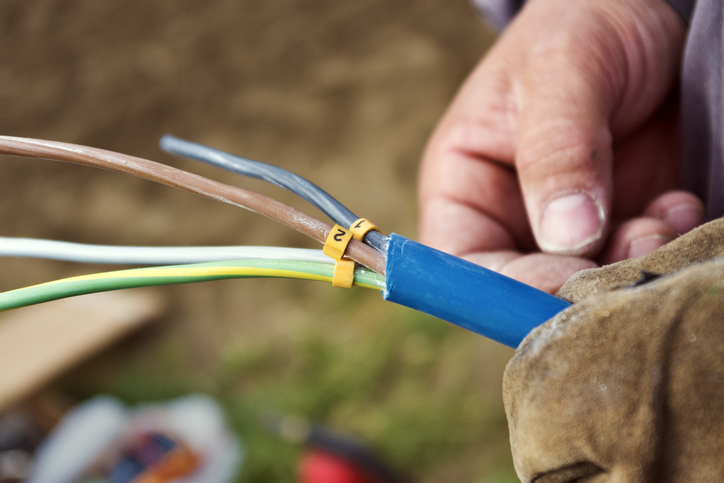Cable Ties for Wire Management
Cable ties, also known as zip ties, are fastening devices designed to bundle and secure wires, cables, or other items. They come in a variety of materials, sizes, and designs, making them suitable for industrial, commercial, and residential use. Within the wire and cable industry, cable ties are critical for maintaining organization, ensuring safety, and supporting effective maintenance practices.
The impact of cable ties extends beyond simple bundling. They contribute to streamlined operations by reducing clutter, enhancing safety by minimizing tripping hazards, and enabling quick identification of wires during maintenance. Whether used in high-tech data centers, automotive industries, or everyday household setups, cable ties offer unmatched utility.

The Key Benefits of Cable Ties
- Organization and Neatness: Cable ties help keep cables and wires neatly bundled, preventing tangling and confusion. Organized wiring not only looks professional but also simplifies troubleshooting and upgrades.
- Enhanced Safety: By securely bundling loose wires, cable ties minimize risks such as tripping hazards or electrical shorts. This is important in workplaces and industrial environments where safety is paramount.
- Ease of Maintenance: Neat and secure wiring allows for quicker maintenance and inspection. Identification cable ties make it easy to label and locate specific wires, saving time during repairs or upgrades.
Selecting the Right Cable Ties
Choosing the correct cable ties for your application involves considering several factors to ensure performance and longevity. Here’s what to look for:
1. Material and Durability: Cable ties are available in various materials, including stainless steel and UV-resistant plastics. These cable ties are ideal for heavy-duty, corrosive environments and outdoor applications.
2. Size and Strength: The size and tensile strength of a cable tie determine its suitability for specific tasks. Smaller ties are great for lightweight bundling, while heavy-duty ties can handle robust applications, such as securing large industrial cables.
3. Environmental Conditions: Consider the environment in which the cable ties will be used. Factors like temperature, humidity, exposure to chemicals, and UV radiation can affect their performance. For instance, outdoor installations require UV-resistant or stainless steel ties to withstand harsh conditions.
IEWC offers a wide range of cable tie types to meet diverse requirements:
- 2-Piece Cable Ties: Versatile and durable for various applications.
- Automatic Tool Cable Ties: Designed for quick installation using automated tools.
- Double Head Cable Ties: Allow dual bundling for better organization.
- Heavy Duty Cable Ties: Built to secure heavy loads or large bundles.
- Identification Cable Ties: Feature labeling options for easy wire identification.
- Metal Pawl Cable Ties: Provide superior locking strength for demanding environments.
- Outside Serrated Cable Ties: Prevent wire damage by keeping serrations on the outside.
- Push Mount Cable Ties: Securely attach to panels or walls.
- Releasable Cable Ties: Reusable ties for temporary applications or adjustments.
- Stainless Steel Cable Ties: Corrosion-resistant for extreme conditions.
- Standard Cable Ties: All-purpose ties for everyday use.
- Stud Mount Cable Ties: Attach directly to threaded studs for secure installations.
Best Practices for Installing and Maintaining Cable Ties
Proper installation and maintenance of cable ties ensure optimal performance and longevity. Follow these tips for best results:
1. Installation:
Use the correct tensioning tools to avoid over-tightening, which can damage wires or reduce the tie’s strength. Select the appropriate size and material for the application and ensure the ties are securely fastened without causing stress on the bundled cables.
2. Regular Inspection:
Inspect cable ties periodically for signs of wear, damage, or environmental degradation. Replace ties that show cracks, discoloration, or reduced strength.
3. Proper Storage:
Store unused cable ties in a cool, dry place to prevent deterioration. Avoid prolonged exposure to sunlight or extreme temperatures to maintain their quality.
4. Use Identification Ties:
For organized and efficient maintenance, use identification cable ties to label and sort wires. This practice simplifies troubleshooting and reduces downtime.
Find Cable Ties at IEWC
Cable ties are more than just a simple fastening solution; they are essential tools for organization, safety, and efficient maintenance. Now that you understand their types, benefits, and best practices, it’s time to put that knowledge into action. Whether you’re managing a complex industrial project or tidying up home cables, choosing the right cable ties makes all the difference.
Explore IEWC’s extensive range of cable ties today and find the perfect fit for your needs. From heavy-duty solutions to reusable options, we have what it takes to elevate your wire and cable management.
Related Resources

Wire Management in Industrial Automation
This guide will delve into the essentials of wire management in industrial automation , covering types of cables, wire management tools, best practices, and the importance of organized cabling for overall system performance.Learn More
Automotive Wire Management
Whenever you’re securing wire for automotive use, it’s important to use cable management solutions such as sleeves, tubing, and ties. Read More
High-Temperature Cable Tie Types & Ratings
While cable ties may seem like a minor consideration, they do an outsized job. In high-temperature applications and corrosive environments, a cable tie binds and bundles cables together, keeping spaces organized, safe, and in proper working order.Learn More


